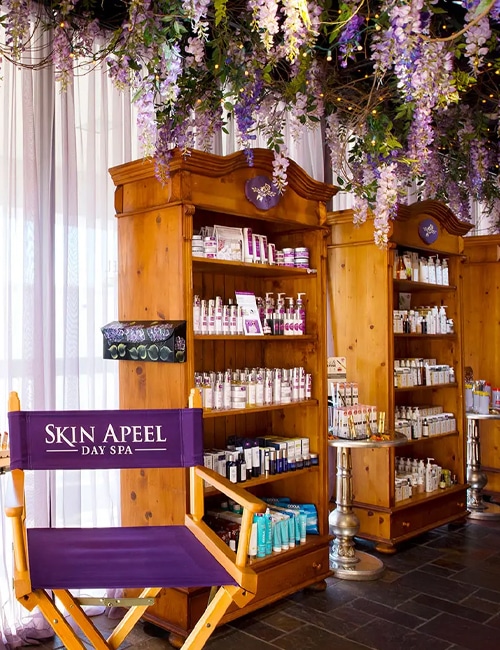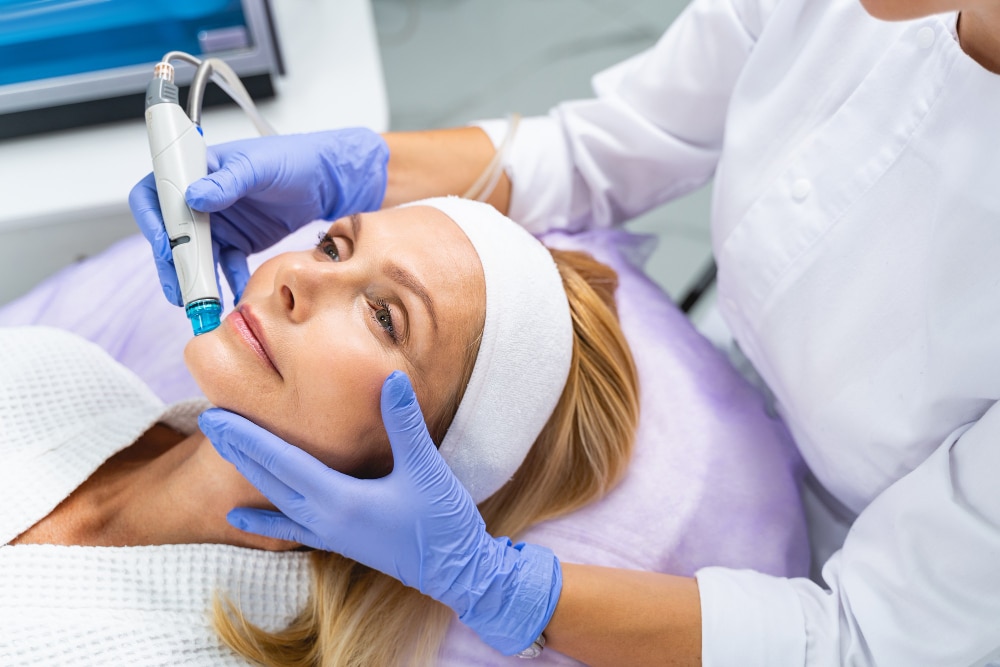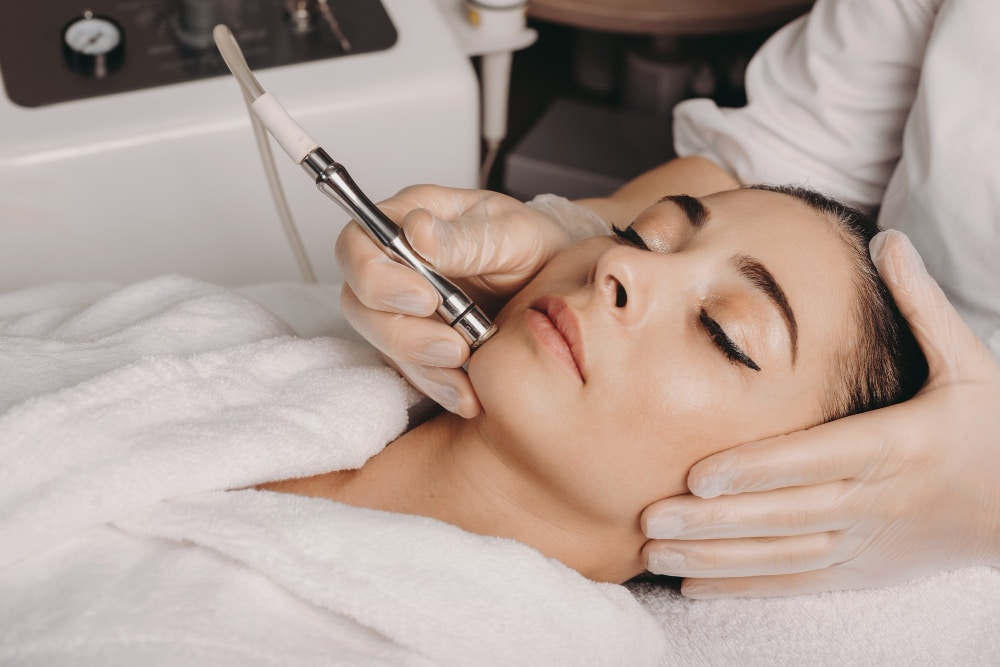Skin Apeel
-
21301 Powerline Road,
Suite 215 Boca Raton, FL 33433 - Phone: (561) 852-8081
- Email: [email protected]

We always want our skin to look its best. The different changes in the climate can be especially hard on the skin, so we should pay extra attention to skin health. The line between hydrodermabrasion and microdermabrasion can be somewhat confusing.
The reason for that is because the two procedures attend to one need: skin resurfacing. These procedures require no surgery or recovery time but make a huge difference in skin vitality and appearance. Unfortunately, you have to pick one of the two? So, which one would that be?
The answer depends on the unique skin conditions of each individual. Certain skin types may be unsuitable for certain treatments. Like how people with sensitive skin may be better suited for the gentler hydrodermabrasion procedure rather than microdermabrasion.
Which one of hydro-dermabrasion or microdermabrasion is right for your skin?
To help you answer that question, we have listed and explained the differences between the two skin resurfacing treatments in this article. But before we delve into the details, let’s define the key terms!

Unlike dermabrasion, microdermabrasion is non-surgical and non-invasive. It is a controlled treatment that uses microcrystals to exfoliate the skin. For that reason, microdermabrasion is less painful and only requires a little time to heal.
However, there are two types of microdermabrasion: the crystal and the diamond tip. Both procedures target exfoliation of the skin but you might want to be sure which to get before you proceed. Fortunately, we have a robust guide that can help with that:
Micro-dermabrasion: What Is It? – Benefits And Everything You Need To Know
With this treatment, a handheld wand is used to spray microcrystals on the skin. These tiny crystals came from a receptacle on the microdermabrasion machine that goes through a tube to the wand.
During the process, the wand simultaneously vacuums away the used crystals and exfoliated skin. Used crystals are sent to a second receptacle on the machine, and are discarded after every procedure.
For this treatment, corundum crystals are typically used because they are nearly as hard as diamonds.
In this treatment, a wand with a diamond-encrusted tip is passed over the skin. The diamond-tipped wand abrades and exfoliates the skin, and once done, vacuum away with the same wand.
Some people prefer diamond microdermabrasion rather than crystal microdermabrasion because it’s a bit cleaner. After the treatment, no stray gritty crystals were left behind on the skin.
Both have almost the same benefits but give a different feeling to your skin. If crystal microdermabrasion is like sandblasting the skin, diamond microdermabrasion is like using sandpaper.
With microdermabrasion, you can already see the effect after the treatment. The skin will feel softer and smoother because the skin is deeply exfoliated by the crystals or the diamond tip.
The suction aspect of the treatment is as vital as the exfoliation itself because the suction stimulates the dermis, causing a remodeling process to occur.
The skin treatment triggers a wound response, increasing elasticity in the skin as it repairs itself. The skin also becomes thicker, smoother, and looks healthier as a result.
Also known as the diamond glow treatment, hydrodermabrasion is a somewhat new skin resurfacing treatment which is safe and non-invasive. But it can be confusing because it uses a diamond tip to distribute its exfoliating agent like diamond-tip microdermabrasion. But they are different. How?
Hydrodermabrasion doesn’t employ microcrystals for exfoliation. Instead, it uses saline solution and oxygen to remove dead skin cells.
This treatment has the same result as microdermabrasion but has the added benefit of improving circulation and hydrating the skin, thus adding glow to dry skin. Hydrodermabrasion also boosts collagen production, which has an anti-aging effect on the skin and temporarily removes wrinkles.
Hydrodermabrasion targets the outer layer of skin to exfoliate and reveal a smoother, more even texture. This treatment is the latest and greatest way to remove dead cells from the skin and eliminate dark spots and hyperpigmentation. With less pain and irritation than microdermabrasion, this treatment uses water and oxygen to effortlessly exfoliate the skin.
Here are the other benefits of hydrodermabrasion:
Now that we understand the key terms, let’s highlight the differences between hydrodermabrasion and microdermabrasion.

The first and crucial difference between hydrodermabrasion and micro-dermabrasion is how intense their experience could feel on your skin. For the former, it is totally pain-free, and you’d rarely see any side effects. But for micro-dermabrasion, there might be a few complications. How so?
Indeed, micro-dermabrasion is not as invasive as dermabrasion. Nonetheless, it is still a bit sophisticated. For that reason, it can leave a bit of redness on your skin.
Ordinarily, hydrodermabrasion and microdermabrasion are both excellent skin resurfacing treatments. However, they are better suited to different skin types.
Hydrodermabrasion, for a start, is the best treatment for dry and irritated skin. Nevertheless, it can be customized for all skin types, but it works best for people with dry skin. Also, hydrodermabrasion is better suited for mild skin conditions. The treatment works effectively for those suffering from acne, blemishes, and pore congestion to clean pores, comedones, and blackheads.
Micro-dermabrasion, on the other hand, is the best treatment for oily skin types. It also works perfectly for patients with severe skin issues. In particular, this skin resurfacing treatment is the best fit for correction:
Hydrodermabrasion adopts a saline solution and oxygen to exfoliate the skin. And as the name suggests, the entire process of this treatment harnesses hydration to remove dead skin cells.
Thanks to hydration, hydrodermabrasion improves blood circulation in the skin. It does that by clearing out the impurities in skin pores through gentle suction. The hydro-peel wand will operate repeatedly in the T-zone area and help in extracting blackheads from pores without over-peeling the skin. Afterward, it adds peptides and serum to improve the production of collagen in the skin.
Micro-dermabrasion, on the other hand, adopts microcrystals to exfoliate the skin. It does that through the abrasiveness of the crystals. In the end, both the crystals and the wand will slough off the dead cells from your skin to deliver a fresh and healthier appearance. It is a minimally invasive procedure used to renew overall skin tone and texture.
Because of the nature of what hydrodermabrasion treats, it provides immediate results. Depending on your aesthetician, you can even start feeling the changes on your skin as early as the next day.
On the other hand, micro-dermabrasion takes a longer time to take effect. And that is justifiable, seeing that some skin issues might cut deep into the body. Nonetheless, you can rest assured that your skin will be flushed after all the wait.
This part often depends on how much resurfacing you are doing to your skin and your aesthetician. Nonetheless, we know that a single hydrodermabrasion treatment every 2-4 weeks will do wonders for your skin.
With micro-dermabrasion, you might need 6-10 treatments every 2-6 weeks before you can see changes in your skin. That depends on the issue you’re treating too.
It is important that we know how to take care of our skin after taking these treatments. Since microdermabrasion and hydro dermabrasion involve some level of exfoliation, avoiding direct sunlight is a must after receiving treatment. Drink plenty of water to keep the skin hydrated. Also, use gentle cleaners and moisturizers, and keep an eye out for any prolonged redness or irritation. Consult a skin expert to help identify the ideal aftercare for your skin type.
Ordinarily, the two skin resurfacing treatments are both excellent and non-invasive which makes them safe. But if you’re someone with sensitive skin, micro-dermabrasion might not be a good fit. And if what you are suffering is mild like blotches, steer clear of micro-dermabrasion. In your case, hydro dermabrasion will suffice.
But if your skin is dry, we advise you to choose microdermabrasion all the way! You might suffer minor redness and sunlight exposure itching, but you’d be fine.
We still have an additional offer for you. It is our trademark crystal-free micro-dermabrasion treatment at Skin Apeel. Think of it as the best form of hydro dermabrasion and conventional micro-dermabrasion. Our offer is gentle but exfoliates deeply. More importantly, it is compatible with all skin types.
Last note: whichever skin resurfacing you choose, ensure you drink lots of water and use gentle skincare products. We wish you all the best!
















































































